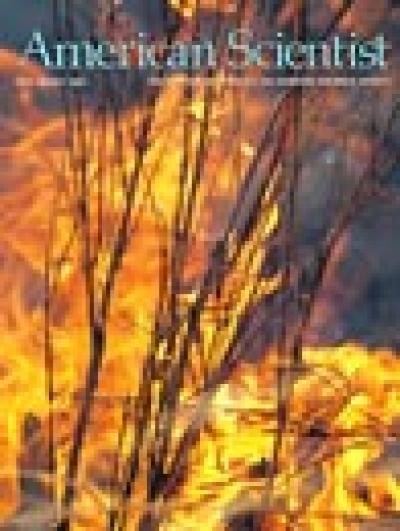Magazine
July-August 2004

July-August 2004
Volume: 92 Number: 4
The burning of plant material releases several gases, including the ozone-destructive compounds methyl bromide and methyl chloride. This may come as a surprise to some people, even to many scientists, who usually think of these and other halogenated, carbon-containing molecules as products of human industry. Indeed, synthetic forms of several organohalogens, including DDT, PCBs and CFCs, have been banned as pollutants. Yet many members of this group are part of the natural environment, widely synthesized by animals, plants, bacteria and the Earth itself. In "Amazing Organohalogens," Gordon W. Gribble leads a tour of natural halocarbons. (Photograph by Jim Grace/PhotoResearchers, Inc.)
In This Issue
- Astronomy
- Biology
- Chemistry
- Communications
- Computer
- Economics
- Engineering
- Environment
- Evolution
- Mathematics
- Medicine
- Physics
- Policy
- Psychology
- Sociology
- Technology
Free Will and Free Won't
Sukhvinder S Obhi, Patrick Haggard
Biology Psychology
Motor activity in the brain precedes our awareness of the intention to move, so how is it that we perceive control?
Mad-Cow Disease in Cattle and Human Beings
Paul Brown
Biology Medicine
Bovine spongiform encephalopathy provides a case study in how to manage risks while still learning the facts
How Do Supercontinents Assemble?
R. Damian Nance
Mathematics Physics
One theory prefers an accordion model; another has the continents travel the globe to reunite
Gravitational Waves and the Effort to Detect them
Peter Shawhan
Astronomy Physics
A worldwide network of detectors may soon measure subtle ripples in spacetime itself, ushering in a new era of astrophysical research
